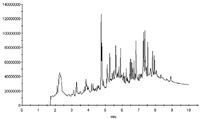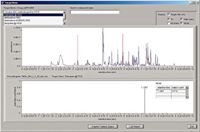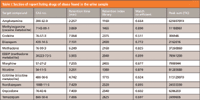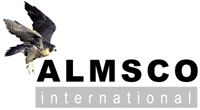Detecting Drugs of Abuse: Enhancing Identification Using High Sensitivity TOF MS and Powerful Interrogation Software
GC–MS analysis of urine for drugs of abuse is commonplace, but can be complicated by high matrix effects and frequent co-elution.
Petra Gerhards, ALMSCO International
Gas chromatography–mass spectrometry (GC–MS) is an established technique for identifying drugs of abuse (DOA) in urine; however complications including high matrix interference, frequent co-elution and analyte polarity are common. In addition, systems used to-date have presented limitations in terms of sensitivity, concentration loading, and spectral skew. Therefore reliability of identification, particularly of trace DOA, from complex data may be compromised and necessitates an improved method of detection.
The BenchTOF-dx™ from ALMSCO International demonstrates breakthrough capability to provide exceptional sensitivity with very high quality spectra. In addition, the instrument's associated software incorporates background-compensation, deconvolution, and data-mining algorithms; these enhance and automate the identification of specific target compounds, even trace level, in very convoluted data.
In this study, a urine sample was obtained for DOA analysis. Fast GC was performed with detection using the BenchTOF-dx. NIST spectra were used by the software for target drug identification.
Experimental
A urine sample was collected from a methadone substitution program and subject to glucuronide separation followed by solid phase extraction (SPE) using a SPEC DAU cation exchanger. The underivatized sample was then evaporated and concentrated in 50 μL MeOH and a 1 μL aliquot used for GC-TOF-MS analysis under the following conditions:
GC–MS system: 6890N, BenchTOF-dx™
Column: Optima 5 Accent 10 m × 0.2 mm × 0.35 μm
Run time: 10 min
Transfer line: 250 °C
Mass range: m/z 35–635
Scan rate/scanset rate: 10 kHz/2 Hz
Ion source: 260 °C
A target library of the compounds of interest was created in the BenchTOF-dx software package using NIST spectra. The GC–MS data for the urine sample was then imported and searched for targets.
Results
The total ion chromatogram (TIC) obtained for the urine sample can be seen in Figure 1. These data are affected by high levels of background interference. The BenchTOF-dx software applies a background compensation algorithm to the data which removes interfering ions, flattening the baseline and giving 'cleaner' spectra. This, in turn, allows more reliable identification of compounds down to the lowest concentrations.

Figure 1: TIC of raw GCâMS data from a urine sample.
Secondly, to address co-elution, the background-free peak spectra are deconvoluted. The speed of data acquisition by the BenchTOF-dx (560 spectra/s) allows the summation of many single scans to scansets. The scansets provide high S/N values and spectra that are unaffected by the phenomenon of spectral skew, which aids effective deconvolution.
Deconvolution is followed by chemometric analysis of the distinct spectra. The target library and deconvolved spectra are compared to determine matches. The software's capabilities are complemented by the high quality spectra obtained by the TOF-MS. The software derives match co-efficients (0–1) and a report is ultimately generated listing all positive target compound identifications.

Figure 2: Software interface - Upper window; background-compensated TIC of urine sample with target drugs highlighted (red bars). Lower window; identification of diazepam
The user interface of the software displaying the background-compensated TIC of the urine sample can be seen in Figure 2. The software has interrogated the TIC for spectra contained in the drugs library created. Detected target compounds are represented by red bars; the heights of the bars represent their peak sum. A section of the report of targets found can be seen in Table I.

Table I: Section of report listing drugs of abuse found in the urine sample
A number of compounds that would have been difficult or even impossible to observe using traditional techniques have been identified. In particular, it has previously been difficult to detect benzodiazepines using GC–MS due to their polarity. The high sensitivity and nonskewed classical spectra provided by BenchTOF-dx has resulted in the confident identification of this class of compounds in their underivatized form.
Conclusion
The overall sample complexity may pose a problem for many analytical detection systems, but the BenchTOF-dx is able to record high quality mass spectra over a wide concentration range.
Even in the presence of a high matrix background, the TOF data, employing the unique software algorithms, allowed the identification of trace drugs of abuse with a high similarity to commercial libraries.
To further explore the capabilities of the BenchTOF-dx, various application notes are available to download from the ALMSCO website.

ALMSCO International
Gwaun Elai Medi Science Campus, Llantrisant CF72 8XL, UK
T: +44 (0)1443 233920; F: +44 (0)1443 231531
Website: www.almsco.com.

The Benefits of Custom Bonded Silica
April 1st 2025Not all chromatography resins are created equal. Off-the-shelf chromatography resins might not always meet the rigorous purification requirements of biopharmaceutical manufacturing. Custom bonded silica from Grace can address a wide range of separation challenges, leading to real performance improvements. Discover more about the latest innovations in chromatography silica from Grace, including VYDAC® and DAVISIL®.
5 Things to Consider When Selecting a Chromatography Silica
April 1st 2025Particularly in the pharmaceutical industry, drug purity isn’t just a goal – it’s essential for achieving safety, stability and efficacy. However, purification is easier said than done, especially with challenging molecules like DNA and RNA “oligonucleotides,” due in large part to their diversity and the range of impurities that can be generated during production. Enter DAVISIL® chromatographic silica, with a wide range of pore diameters and particle sizes to meet your specific application, performance and sustainability requirements. Before you choose the chromatography resin for your next purification application, take a look at these 5 considerations.
Automating Protein Purification: Efficiency, Yield, and Reproducibility
March 27th 2025Recent advancements in automated protein purification stress the importance of efficiency, scalability, and yield consistency. This eBook compares different purification platforms, highlighting their impact on downstream applications and demonstrating how automation enhances throughput and process control.
MilliporeSigma: Ultrapure Water for Sensitive LC-MS Analysis of Pesticides
March 25th 2025The aim of the study was to illustrate the efficiency of Milli-Q® water purification systems in eliminating pesticides from tap water, thereby producing and delivering reliable and consistent-quality ultrapure water suitable for pesticides analysis















